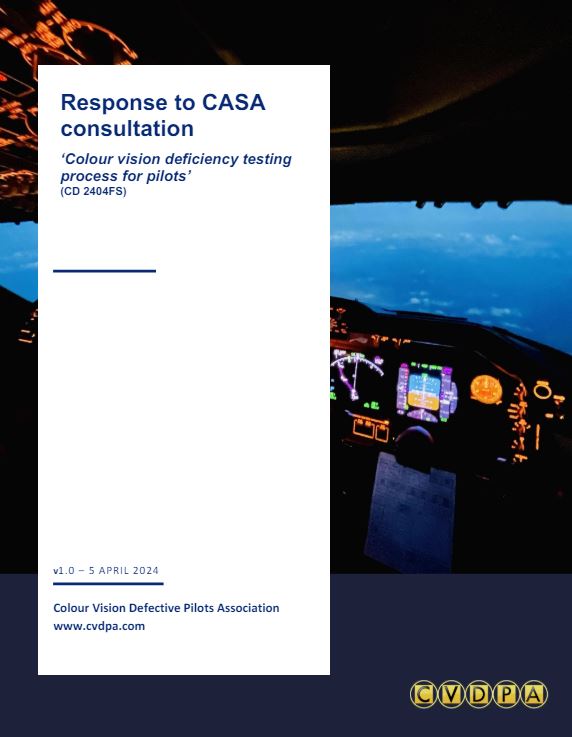Calling all CVDPA members, supporters and those in the aviation industry!
CASA has now opened consultation on a proposed legislative instrument which will see the reinstatement of an operational test, the passing of which will result in a clean medical with no CVD related restrictions.
CVDPA by and large supports this position and we strongly encourage all our members and supporters to take a few minutes to submit their feedback to the proposal via the link below so that we can ensure this issue is resolved ASAP.
Overall, CVDPA welcomes the proposal by CASA to re-implement an operational assessment for the purposes of CASR 67.150 (6)(c) and 67.155 (6)(c).
The proposed AOCVA simulates an operational situation, as required by those CASR.
You can read CVDPA’s response to the consultation here
In addition to a formal response, the CVDPA directors recently held a webinar where the the proposed changes were discussed in more detail
CVDPA strongly encourages all our members and supporters to take a few minutes to submit their feedback via CASA’s Consultation Portal before consultation closes on the 14th of April.


